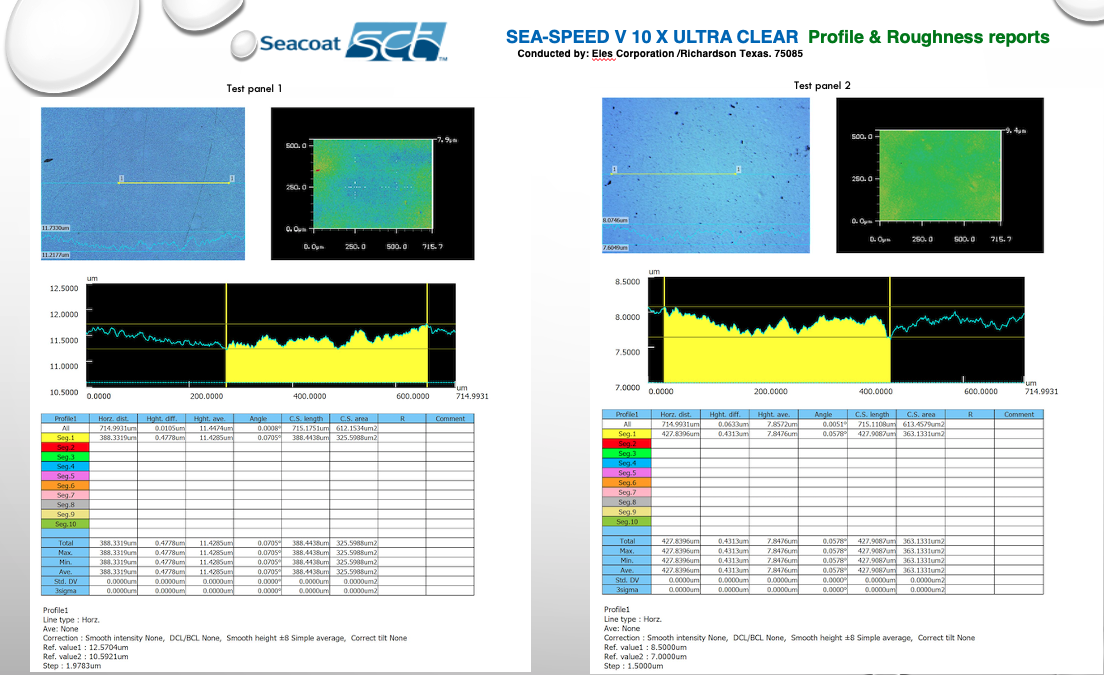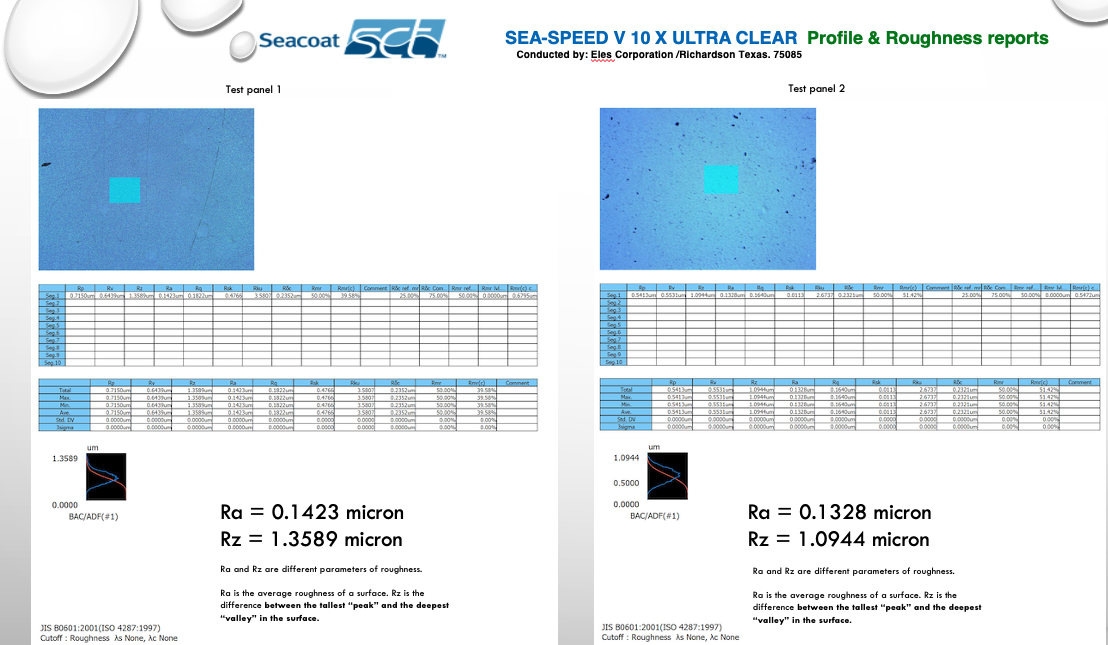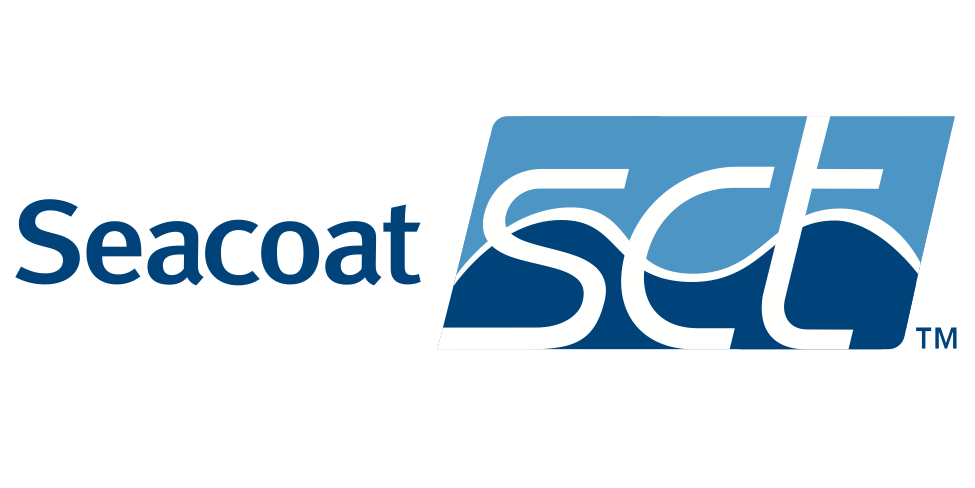Testing and Certifications

Surface roughness test data:
Coating surface roughness impacts fuel consumption, CO2 (GHG) emissions, Vessel speed and to a degree fouling. A general rule of thumb in Commercial vessel naval architecture and design is that for each twenty microns difference of coating surface roughness will impact fuel consumption by 1%. Typical conventional antifouling coatings are 120 – 150 microns roughness. Several products in the market can achieve 90 microns in ideal conditions.” As detailed below the SEA-SPEED V 10 X ULTRA surface roughness is a fraction of 1 micron. (one micron is 1 one-thousandth of a millimeter)



Mechanical tests:
Seacoat SCT
Contact
Phone: (832) 237 4400
Fax: (832) 237 4414
info@seacoat.com
Address
31902 Industrial Park Drive
Pinehurst, Texas 77362 USA
